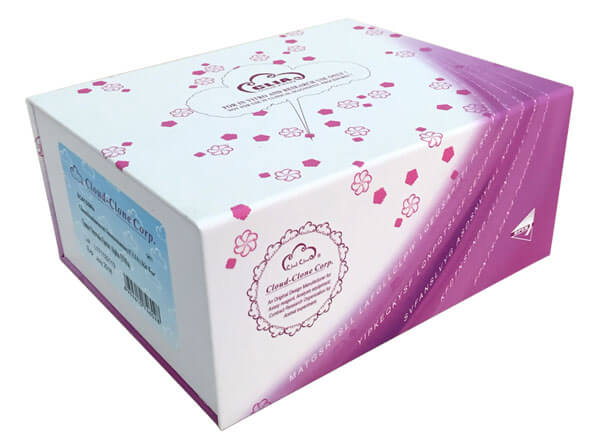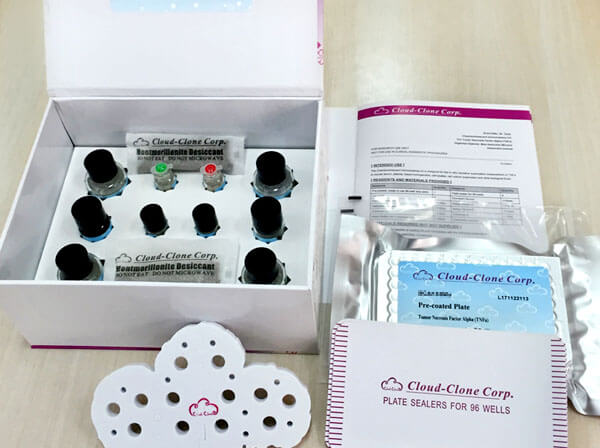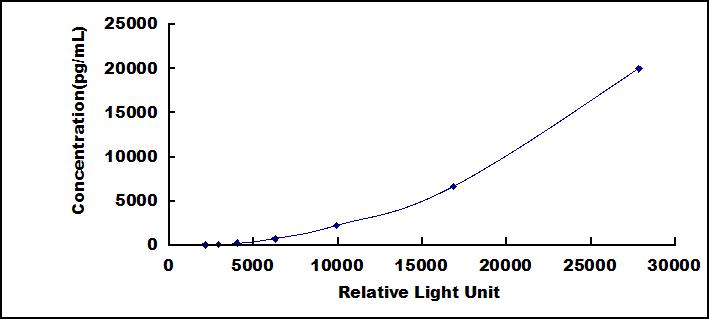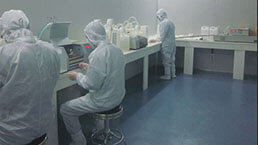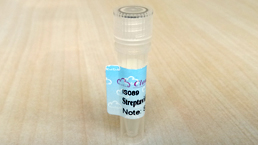CLIA Kit for Complement Component 3a (C3a) 

- UOM
- FOB US$ 588.00 US$ 840.00 US$ 3,780.00 US$ 7,140.00 US$ 58,800.00
- Quantity
Overview
Properties
- Product No.SCA387Hu
- Organism SpeciesHomo sapiens (Human) Same name, Different species.
- ApplicationsChemiluminescent immunoassay for Antigen Detection.
Research use only - DownloadInstruction Manual
- CategoryInfection immunityImmune moleculeAutoimmunity
Sign into your account
Share a new citation as an author
Upload your experimental result
Review

Contact us
Please fill in the blank.
Recovery
Matrices listed below were spiked with certain level of recombinant Complement Component 3a (C3a) and the recovery rates were calculated by comparing the measured value to the expected amount of Complement Component 3a (C3a) in samples.
| Matrix | Recovery range (%) | Average(%) |
| serum(n=5) | 87-96 | 90 |
| EDTA plasma(n=5) | 91-105 | 97 |
| heparin plasma(n=5) | 88-96 | 92 |
Precision
Intra-assay Precision (Precision within an assay): 3 samples with low, middle and high level Complement Component 3a (C3a) were tested 20 times on one plate, respectively.
Inter-assay Precision (Precision between assays): 3 samples with low, middle and high level Complement Component 3a (C3a) were tested on 3 different plates, 8 replicates in each plate.
CV(%) = SD/meanX100
Intra-Assay: CV<10%
Inter-Assay: CV<12%
Linearity
The linearity of the kit was assayed by testing samples spiked with appropriate concentration of Complement Component 3a (C3a) and their serial dilutions. The results were demonstrated by the percentage of calculated concentration to the expected.
| Sample | 1:2 | 1:4 | 1:8 | 1:16 |
| serum(n=5) | 95-103% | 96-105% | 92-101% | 80-96% |
| EDTA plasma(n=5) | 90-97% | 79-93% | 91-99% | 81-90% |
| heparin plasma(n=5) | 79-94% | 80-99% | 88-96% | 89-103% |
Stability
The stability of kit is determined by the loss rate of activity. The loss rate of this kit is less than 5% within the expiration date under appropriate storage condition.
To minimize extra influence on the performance, operation procedures and lab conditions, especially room temperature, air humidity, incubator temperature should be strictly controlled. It is also strongly suggested that the whole assay is performed by the same operator from the beginning to the end.
Reagents and materials provided
| Reagents | Quantity | Reagents | Quantity |
| Pre-coated, ready to use 96-well strip plate | 1 | Plate sealer for 96 wells | 4 |
| Standard | 2 | Standard Diluent | 1×20mL |
| Detection Reagent A | 1×120µL | Assay Diluent A | 1×12mL |
| Detection Reagent B | 1×120µL | Assay Diluent B | 1×12mL |
| Substrate A | 1×10mL | Substrate B | 1×2mL |
| Wash Buffer (30 × concentrate) | 1×20mL | Instruction manual | 1 |
Assay procedure summary
1. Prepare all reagents, samples and standards;
2. Add 100µL standard or sample to each well. Incubate 1 hours at 37°C;
3. Aspirate and add 100µL prepared Detection Reagent A. Incubate 1 hour at 37°C;
4. Aspirate and wash 3 times;
5. Add 100µL prepared Detection Reagent B. Incubate 30 minutes at 37°C;
6. Aspirate and wash 5 times;
7. Add 100µL Substrate Solution. Incubate 10 minutes at 37°C;
8. Read RLU value immediately.

Test principle
The microplate provided in this kit has been pre-coated with an antibody specific to Complement Component 3a (C3a). Standards or samples are then added to the appropriate microplate wells with a biotin-conjugated antibody specific to Complement Component 3a (C3a). Next, Avidin conjugated to Horseradish Peroxidase (HRP) is added to each microplate well and incubated. Then the mixture of substrate A and B is added to generate glow light emission kinetics. Upon plate development, the intensity of the emitted light is proportional to the Complement Component 3a (C3a) level in the sample or standard.;
Giveaways
Increment services
Citations
- Immobilization of soluble complement receptor 1 on islets.ScienceDirect: S0142961211002596
- Elevated complement factor C5a in maternal and umbilical cord plasma in preeclampsiaPubMed: 23415845
- Efficacy of a synthetic antimicrobial peptidomimetic versus vancomycin in a Staphylococcus epidermidis device-related murine peritonitis modelPubmed: 23645587
- Therapeutic effects of sesame oil on monosodium urate crystal-induced acute inflammatory response in ratsPubmed: 24353977
- Complement Split Products C3a/C5a and Receptors: Are They Regulated by Circulating Angiotensin II Type 1 Receptor Autoantibody in Severe Preeclampsia?PubMed: 26485247
- Human IgG Antinuclear Antibodies Induce Pregnancy Loss in Mice by Increasing Immune Complex Deposition in Placental Tissue: In Vivo StudyPubMed: 26388133
- Acute and prolonged complement activation in the central nervous system during herpes simplex encephalitisPubmed:27235358
- Alternative Pathway Inhibition by Exogenous Factor H Fails to Attenuate Inflammation and Vascular Leakage in Experimental Pneumococcal Sepsis in MicePubmed:26872035
- Dosagem de frações ativadas do sistema complemento em empiema induzido em ratos10183
- Interaction of gold and silver nanoparticles with human plasma: Analysis of protein corona reveals specific binding patterns.pubmed:28131092
- Accuracy of complement activation product levels to detect infected pleural effusion in ratspubmed:28474458
- The Complement C3a–C3aR Axis Promotes Development of Thoracic Aortic Dissection via Regulation of MMP2 ExpressionPubmed:29367209
- Long term safety and immunological effects of a nanobiotherapeutic, bovine poly-[hemoglobin-catalase-superoxide dismutase-carbonic anhydrase], after four weekly …Pubmed:29873524
- Mesenchymal stromal cell secretory factors induce sustained improvements in islet function pre-and post-transplantationDoi: 10.1016/j.jcyt.2018.07.007
- Intrathecal complement activation by the classical pathway in tick-borne encephalitisPubmed: 30850976
- Pathogenic roles of anti-C1q antibodies in recurrent pregnancy loss
- Hemocompatibility of biodegradable Zn-0.8 wt%(Cu, Mn, Li) alloys
- Complement-mediated hypersensitivity reactions to an amphotericin B-containing lipid complex (Abelcet) in pediatric patients and anesthetized rats: Benefits of slow infusion33549818
- Increased ratios of complement factors C3a to C3 in aqueous humor and serum mark glaucoma progression33493474
- C‐reactive protein inhibits C3a/C3aR‐dependent podocyte autophagy in favor of diabetic kidney diseasePubmed:35503088



